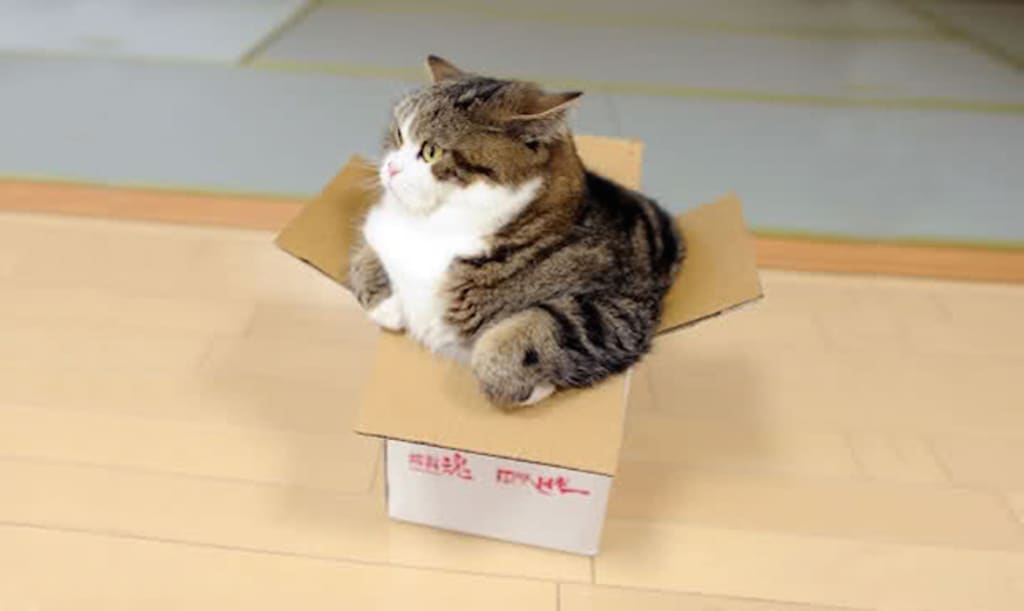7 Tips for Moving with Cats
A Guide to Moving Homes with Your Furry Friends

Moving can be both exciting and daunting. Not only are you tasked with packing up all of your worldly possessions and transporting them across distances, but you have a fur baby to worry about too. Cats are notoriously bad at change, if you have ever so much as switched their food brands then you probably know this all too well. Moving, by definition, is the biggest change you can possibly impart on your poor, confused little cat. Here are some tips to help you make that transition as smooth as possible all the way from packing up to the trip to helping them transition to your knew digs!
1. Acclimation periods are your friend.
Cats are naturally curious animals but they can often be started by abrupt changes in their environment. Before you begin packing, leave out all the boxes and suitcases so your cat can explore them and get used to having them around. If possible aim for leaving boxes out for a couple weeks with a minimum of several days to let your cat fully adjust.
Do the same with their cat carrier. By leaving the carrier out for your cat to explore and sniff several days before the move, they will be less stressed out upon seeing it and, therefore, will require less force when getting them into it on moving day.
2. Keep your cat's routine as stable as possible.
For the duration of packing and the move, make sure your cat gets fed and played with on their regular schedule. By keeping this amount of normalcy in their day your cat will be less likely to panic at the other changes occurring around them. As we all know, a fed cat is a happy cat. Especially when it's on his or her schedule.
3. Medication is always an option.
As you get closer to moving day, talk to your vet about anti-anxiety medication or sleep aid options for your cat. This is a great option for cats who have not been adjusting well to packing already, or those cats who have a history of getting very worked up on car rides. If your move requires a very long car ride, even something as simple as Benadryl in a pet safe dosage will help to keep them comfortable.
4. Ask the movers to mind your cat.
While the boxes and furniture are being ferried out of your house be sure your cat doesn't find an opportunity to slip out as well. You can either keep a sign on the door asking movers to ensure it is shut behind them or keep your cat in a room with a closed door to prevent any untimely escape attempts. Just make sure the room you close your cat in has all the essentials to keep them cozy, like water and a litter box.
5. Keep them comfortable on the drive.
This part will require you to know your cat and keep tabs on how they seem to be doing emotionally. It's best to give your cat a small breakfast the morning of the move as nervous cats are prone to vomiting and tummy troubles. Administer any medications that your vet recommended before loading your cat in the car. If your cat is very nervous and skittish, or seems agitated, keep them in the carrier at all times. Resist the urge to open the carrier to comfort them as they may try to escape from the carrier and attempt to hide somewhere in the car which can be inconvenient and even dangerous.
If you have a very long drive ahead of you then you may want to find a way to allow your cat to stretch their legs or allow them some more free roaming. This can be achieved either with a harness and a leash or by putting a larger dog crate in the car for your cat to move around in. Either way, this is also something you will want to acclimate your cat too for some time before the move.
6. Establish a "safe room" for your cat in your new home.
When you arrive at your new home, immediately place your cat in a quiet room that has all the amenities your cat needs to settle in for a couple days. By establishing this closed space for your cat to adjust and calm down, they will be more ready to explore the rest of the house and less anxious about the transition. This method is the safest way to keep your cat calm and let them adjust at their own pace. This will also allow for your cat to easily find his or her litter box, food, and water without having to navigate a new layout, hence minimizing accidents. Ensure that they receive adequate attention and play time to help normalize the space and calm their nerves. Be prepared for your cat to sulk or show some other unusual behaviors for a little while as they adjust.
7. Don't rush the final acclimation period.
Once the house is a little more in order and your fur baby has adequately calmed down (they begin acting more normally), you can release the tiny beast and let them explore. If the safe room was not the room you wanted to permanently house the litter box then you will need to transition them to using a different litter box. The best way to do this is by getting a second litter box to keep in the desired location and letting your cat adjust to that box before removing the one from the safe room. If your cat refuses to use the new box, start slowly moving the litter box from the safe room day by day until it has migrated all the way to the desired location.
Hopefully, these tips help you keep your fluffy bundle of joy safe and calm during this stressful time. Happy moving!
If you liked what you read, consider leaving a tip to help me keep bringing quality pet content to you! You can also check out my other PetLife articles like my guide to transitioning your cat to wood litter!
About the Creator
Alina Gallupe
I am a graduate student of Mental Health Counseling in Cambridge, MA. I strive to combine my mental health knowledge and my love of writing to explore all topics related to the human experience. I am also a dedicated cat mom and home cook.






Comments
There are no comments for this story
Be the first to respond and start the conversation.